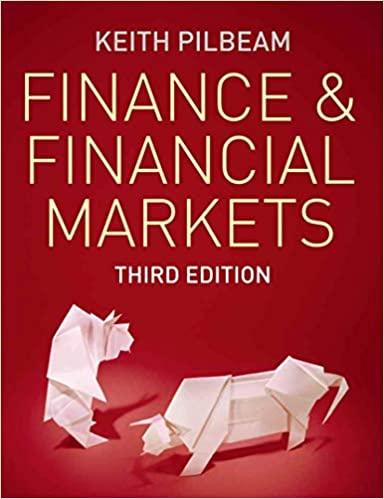Question
1. Mr. C died in the current year. Based on the following facts, compute Mr. C's gross estate.In 1993, C gave cash of $50,000 to
1. Mr. C died in the current year. Based on the following facts, compute Mr. C's gross estate.In 1993, C gave cash of $50,000 to his friend. No gift tax was paid on the gift.
C held property jointly with his brother. Each paid $30,000 of the total purchase price of $60,000 .
When C died it was valued at $100,000. In 1992, C purchased a life insurance policy on his life
and give it as a gift to his sister. C retained the right to change the beneficiary. Upon C's death,
his sister received $150,000 under the policy.
In 1985, C gave his son a summer home (fair market value in 1985 - $125,000). C continued to
use it until his death pursuant to an understanding with his son. Fair market value at date of death was $175,000.
A. $375,000
B. $200,000
C. $250,000
D. $415,000
2. All the following statements concerning the unified estate and gift tax system are correct EXCEPT:
A. The annual exclusion is cumulative and is available for lifetime gifts or testamentary gifts.
B. The applicable credit amount can be used to offset either gift tax liability or estate tax liability.
C. The amount of any adjusted taxable gifts made since 1976 must be added to the taxable estate in computing the estate tax due.
D. An unlimited marital deduction is available under both the gift and estate tax rules.
3. Which of the following statements concerning the unified system of estate and gift taxation are correct?
I Lifetime gifts are taxed at a flat rate, and testamentary gifts are taxed at progressive rates.
II A taxpayer making lifetime taxable gifts may elect to apply the applicable credit amount against those gifts, or the taxpayer can pay gift tax and conserve the credit to offset estate tax liability.
III An estate of $200 million can pass tax-free to the decedent=s spouse.
IV A gift that qualifies for and does not exceed the annual exclusion is not added to the taxable estate as an adjusted taxable gift in computing the estate tax.
A. I and II only
B. I and IV only
C. II and III only
D. III and IV only
4. Which of the following statements concerning differences between the estate and gift tax rules is (are) correct?
I Gift-splitting is permitted with lifetime gifts but not with testamentary bequests.
II The annual exclusion is available to reduce taxable lifetime gifts but not with testamentary bequests.
III The estate tax is tax-exclusive, while the gift tax is tax-inclusive.
A. I only
B. I and II only
C. III only
D. I, II, and III
5. Which of the following statements best describes the Aexemption equivalent@?
A. All lifetime gifts are credited against estate tax liability under the unified tax system.
B. A donor may give $14,000 per person tax-free to as many donees as the donor wishes.
C. An applicable credit amount permits each individual to make lifetime transfers of up to $5.43 million currently or testamentary bequests of up to $5.43 million currently without payment of estate or gift taxes.
D. Both estate and gift tax rates are progressive.
Step by Step Solution
There are 3 Steps involved in it
Step: 1

Get Instant Access to Expert-Tailored Solutions
See step-by-step solutions with expert insights and AI powered tools for academic success
Step: 2

Step: 3

Ace Your Homework with AI
Get the answers you need in no time with our AI-driven, step-by-step assistance
Get Started


